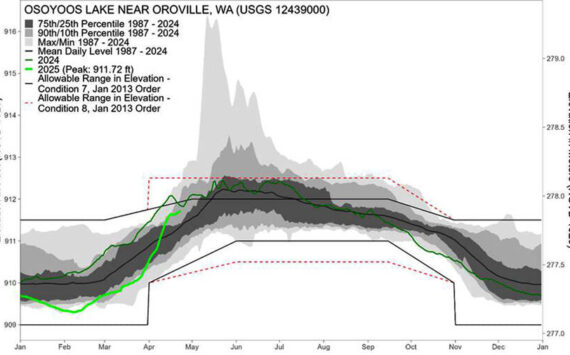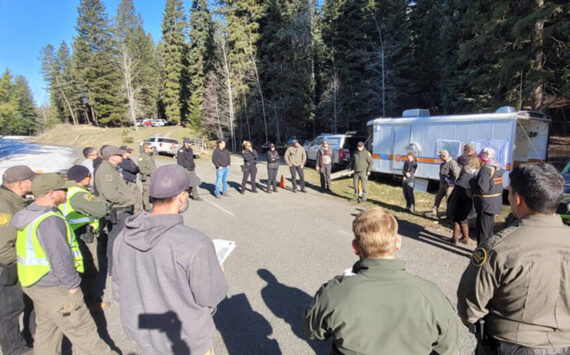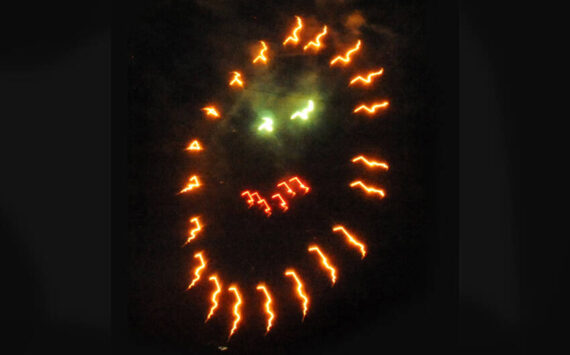OROVILLE – Oroville School Superintendent Ernie Bartelson discussed the upcoming $1.497 million two-year Maintenance and Operations levy with chamber members last Friday.
Bartelson, flanked by High School Principal Steve Quick and Elementary School Principal Joe Worsham, said the upcoming Feb. 9 election marked a change from previous requests as the school board had decided to ask for the maximum amount they could. He said several changes in the district’s funding have occurred since he stood before the group about the levy two years ago.
“There have been a lot of changes, the school district was reassessed and took a big jump. This is the largest amount ever asked of our community for our schools,” he said.
The reasons for the higher levy amount, double from the last two-year levy, are many.
Although nearly twice as much help is being asked of the community, the collection rate compared to the last voter approved levy two years ago is only rising to $2.30 per $1000 per assessed valuation. The voters approved a collection rate of $2.22 per $1000 in 2008. The rate being only slightly higher has to do with the increase in assessed valuation in the district, much of it coming from new construction over the past two years. Currently the county assesses property values every four years, but is going to be moving to an annual assessment system.
“Once the levy amount is approved, even if evaluation were to go up, we cannot collect any more money. Instead, if the evaluation goes up the price per $1000 goes down,” said Bartelson.
The district witnessed this phenomenon after the last levy was approved and the rate dropped to considerably.
The district isn’t asking for the maximum amount of levy money allowed this go around just because it can. Because of the increase in the valuation of the property within the school district doubled, the state took away Oroville’s levy equalization funding which was a loss of about $400,000 each year. Another reason is the cost of instructional materials has risen greatly and the district needs $100,000 for K-12 program adoptions. Textbooks can cost between $70 and $120 each, according to Bartelson and the district is falling behind in replacing them.
The school district also projects a loss of I-728 “Class Size Initiative” funding of $75,000, kindergarten funds of $100,000 and K-4 Enhancement of $100,000 as the state cuts back funding because of the current budget crisis.
Another cost to the district will be the end of stimulus funding which it received last year. The federal government expects school districts to continue with programs that were funded by stimulus monies even after those monies are no longer available to the school districts.
According to a handout from Bartelson, the levy supports a long list of needs at the school district, including utilities, technology, maintenance, extra-curricular programs, two classified positions, transportation, curriculum, summer school, AP classes, libraries, substitutes, the gifted program, academic contests, the HOSTS program, Knowledge Bowl, yearbook, music program, vocational program, lunch/breakfast, sixth grade camp and classroom materials.
Although Oroville is requesting a higher levy amount than each of the six nearby school districts seeking levy approval in February, at $2.30/$1000 its collection rate is the lowest. The other districts seeking levy approval are Omak, $1,488,093 at $2.39/$1000; Brewster, $975,494 at $3.43/$1000; Bridgeport, $180,000 at $3.43/$1000 and Pateros (2011) $455,000 at $2.45/$1000 and (2012) $475,000 at $2.54/$1000.
Tonasket and the Methow Valley will be seeking levies in April and Republic ran a small three-year levy in February of 2009.
To fully discuss taxpayer contributions to their schools, people should really have a talk about the total cost of the levy plus any school bonds that were passed for new or remodeled facilities, according to Bartelson.
“In 2008, taxpayers in our district paid $2.22 per $100 of assessed valuation plus an additional 66 cents per $1000 of assessed valuation for the high school remodel in 1992. That bond was paid off last month. The net result is that Oroville taxpayers will no longer be paying 66 cents per $1000 for the remodel bond,” he said.






